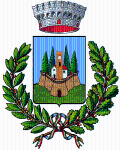Descrizione
Vagliagli è una frazione del comune di Castelnuovo Berardenga, in provincia di Siena. Antico borgo del XIII secolo, è situato a 511 metri di altitudine, lungo la strada provinciale che conduce a Radda in Chianti.
Una curiosità sull'etimologia del toponimo: Vagliagli significa letteralmente valle degli agli. L'aglio selvatico appare anche nello stemma del paese: una mano che stringe un mazzo di agli.
Nella piazza centrale del paese, piazza Vittorio Emanuele, si trova la chiesa di San Cristoforo, attestata fin dal 1226, ma l'edificio attuale, con facciata in stile neoromanico, è frutto di una ricostruzione effettuata tra la fine del XIX e del XX secolo.
L'interno ad unica navata conserva opere di notevole interesse tra cui un affresco della Scuola Senese del XVI secolo, raffigurante San Cristoforo, San Bernardino e San Sebastiano, l'importante fonte battesimale in marmo di Lorenzo di Mariano, detto Il Marrina del XV secolo, una tela della bottega di Rutilio Manetti raffigurante la Madonna in gloria tra San Cristoforo e Santa Caterina d'Alessandria, un trittico in stiletrecentesco senese con San Pietro fra i Santi Paolo e Stefano, opera di Icilio Federico Joni, del 1940.
Nella piazza a sinistra della chiesa i resti importanti del palazium medievale con porta ad arco ogivale.
Situato al centro di una splendida conca dalla quale si gode una vastissima veduta, Vagliagli è una delle località più frequentate dai turisti chiantigiani per la bellezza del borgo e la magnifica posizione paesaggistica.
Nel periodo estivo sono numerosi gli eventi organizzati nel paese: il primo weekend di luglio viene organizzato Blues Divino, una festa di due giorni che chiama artisti da tutto il mondo. Il terzo weekend di Agosto, i ragazzi dell'associazione Polisportiva Vagliagli organizzano "Birra e Salsicce", una tre giorni di spettacoli musicali, cibo e birra artigianale. A fine settembre, gli abitanti di Vagliagli organizzavano la "Festa dell'Uva" per festeggiare la vendemmia.
Vagliagli è stato ambientazione di film quali Piazza delle Cinque Lune e Letters to Juliet.
English version:
Vagliagli is a hamlet of the municipality of Castelnuovo Berardenga, in the province of Siena. A village dating back to the 13th century, it stands at 511 meters above sea level along the provincial road leading to Radda in Chianti.
The etymology of the toponym is curious: Vagliagli literally means “valley of garlics.” Wild garlic even appears in the town coat of arms, a hand grasping a bunch of garlic.
In the town's central piazza, Piazza Vittorio Emanuele, stands the church of San Cristoforo, attested as early as 1226, although the current building with its neo-Romanesque style is the result of a reconstruction that took place in the late 19th/early 20th century.
The single-nave interior contains works of some interest, including a 16th-century Sienese School fresco depicting San Cristoforo, San Bernardino and San Sebastiano, an impressive 15th-century marble baptismal font by Lorenzo di Mariano, known as Il Marrina, a canvas from the workshop of Rutilio Manetti depicting the Madonna in Glory with Saints Christopher and Catherine of Alexandria, a triptych in 14th-century Sienese style with Saint Peter between Saints Paul and Stephen, by Icilio Federico Joni, from 1940.
In the piazza to the left of the church are significant remains of the medieval palazium with a semicircular-arch gate. Set in the middle of a splendid valley with wonderful, expansive views, Vagliagli is one the most popular spots with Chianti tourists, thanks to the beauty of the village and its magnificent location.
During the summer there are numerous events in town: the first weekend in July brings Blues Divino, a two-day festival that draws artists from around the world. The third weekend of August, the youth of the Polisportiva Vagliagli association organize "Beer and Sausages", three days of music, food and craft beer. At the end of September, Vagliagli residents hold the “Festival of the Grape” to celebrate the grape harvest.
Vagliagli has been a location for films including Piazza delle Cinque Lune and Letters to Juliet.
Modalità d'accesso
sempre aperto
Indirizzo
Orario per il pubblico
Punti di contatto
Ultimo aggiornamento: 4 marzo 2024, 12:04

